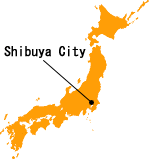


|
A popular shrine situated in a lush forest
Meiji Jingu is a shrine dedicated to Emperor Meiji and his consort, Empress Shoken. Located in Tokyo's Shibuya City, the Shrine compound is comprised of the Naien, or inner precinct, which contains the stately Main Shrine, and the surrounding Gaien, or outer precinct. The Gaien contains the Meiji Memorial Picture Gallery, which exhibits 80 wall paintings depicting the lives of the Emperor and Empress, as well as sports facilities. The Shrine was designed by the architect Chuta Ito (1867-1954), a leading light of modern Japanese architecture. The grounds cover a total area of 710,000 ‡u (about 175 acres). Most of the main structures, including the original shrine buildings, were destroyed by the fire-bombings of World War II, and were rebuilt and restored in 1958. The best of Japanese shrine architecture comes together at the Meiji Jingu shrine. The Main Shrine is built with Japanese cypress, an optimal wood for construction. Because it is highly water-resistant, it is unpainted and used in its natural state at the Shrine. The Torii (Shrine Gate), also made of Japanese cypress, is one of Japan's largest at a height of 12m (13.2 yd.) and a span of 9.1m (10 yd.) from post to post. The Shrine roofs are clad with copper plates that are highly durable and noted for their beautiful green rust. There are a variety of views regarding the origin of Shinto shrine gates. One version is that they derive from perches. According to Shinto myth, Amaterasu Omikami, the Sun Goddess, was angered by her brother the Storm God's noisy behavior whilst ravaging the earth. She shut herself in a cave and closed the entrance with a large boulder, depriving the world of light. In an effort to entice her to come out, a rooster with an unusual call was placed on a perch outside the cave. Its crow succeeded in bringing the Sun Goddess out. Since then, perches became a fixture before Shinto altars, and this is said to have later become the Torii shrine gate. The Naien and Gaien, together, possess some 120,000 trees of varying species that were donated from all parts of Japan. The Gyoen, or Inner Garden, which is situated between the Torii gate and the Main Shrine, is famous for the 1,500 irises that bloom in June. It's hard to believe that one is in Tokyo when in the Inner Garden, for the garden is filled only with the sound of birds and insects; its tranquility makes it a popular oasis for Tokyoites. Photo: (top) Panorama of Meji Jingu, (bottom) The main building of Meiji Jingu (Meiji Jingu) Unauthorized reproduction of the
photos in this page is prohibited.
Related Links: |
|

